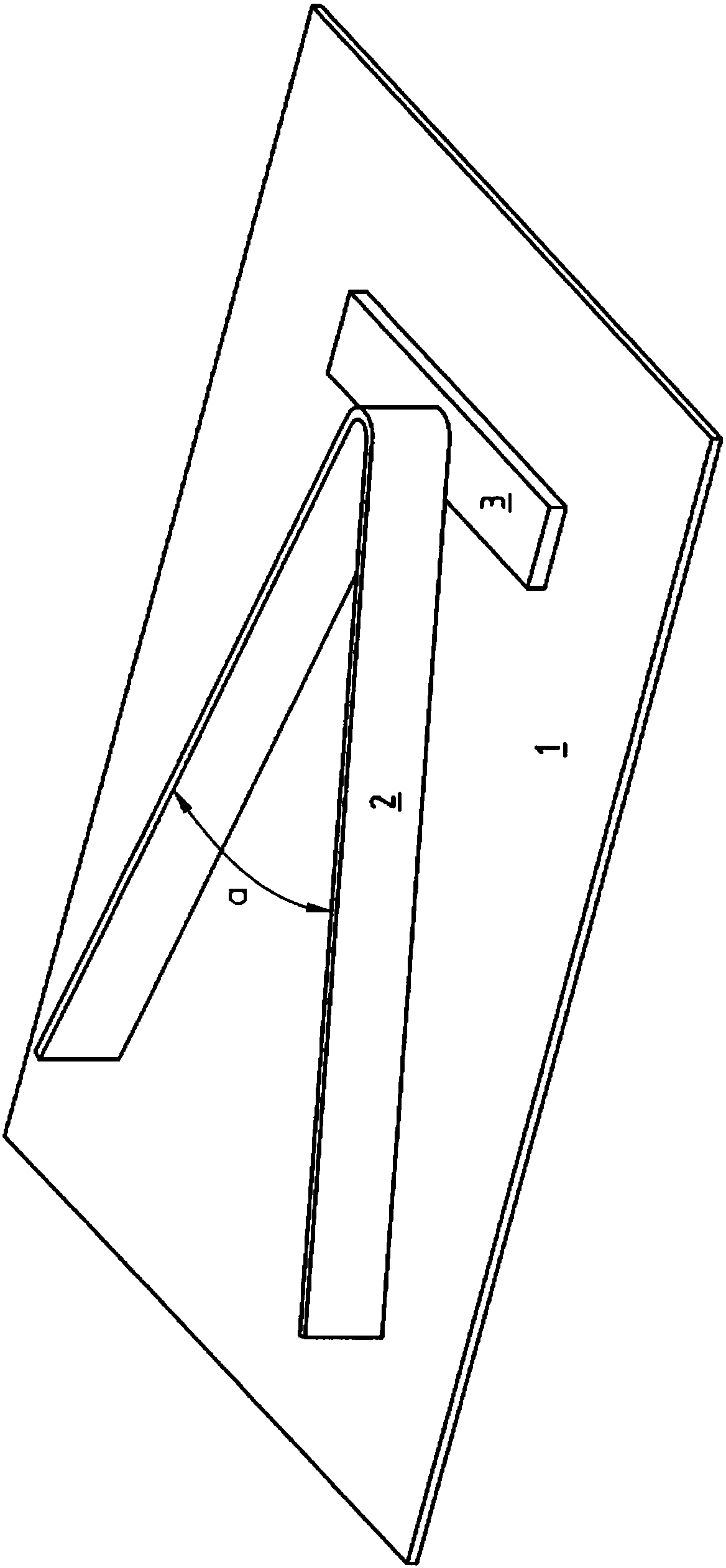Aluminum composite material for use in thermal flux-free joining methods and method for producing same
An aluminum composite material and thermal bonding technology, applied in the direction of welding/cutting media/materials, chemical instruments and methods, applications, etc., can solve the problems of incompatible use of flux, high cost, etc.
- Summary
- Abstract
- Description
- Claims
- Application Information
AI Technical Summary
Problems solved by technology
Method used
Image
Examples
Embodiment Construction
[0138] In order to study the advantages of the aluminum composite material according to the present invention, as figure 1 Multiple tests were performed with a special brazing test configuration shown in perspective. In principle, the brazing test structure consists of three components in total, namely plate 1, angle plate 2 and support plate 3 for angle plate 2. The gusset 2 rests with its closed end 2a on a support plate 3 on the plate 1 . In contrast, the two leg ends 2b are placed on the plate 1, whereby, as figure 2 As shown in the side view, a gradually changing gap appears at the support point on the support plate 3 from the leg end 2b of the gusset 2 to the closed end 2a. The brazing gap 4 gradually increases from the corner end 2b of the gusset 2 to the closed end 2a. This progressively larger brazing gap 4 makes it possible to assess to what extent the brazing properties of the aluminum composite material of the plate 1 vary with different surface treatments.
...
PUM
| Property | Measurement | Unit |
|---|---|---|
| thickness | aaaaa | aaaaa |
| thickness | aaaaa | aaaaa |
Abstract
Description
Claims
Application Information
 Login to View More
Login to View More - R&D
- Intellectual Property
- Life Sciences
- Materials
- Tech Scout
- Unparalleled Data Quality
- Higher Quality Content
- 60% Fewer Hallucinations
Browse by: Latest US Patents, China's latest patents, Technical Efficacy Thesaurus, Application Domain, Technology Topic, Popular Technical Reports.
© 2025 PatSnap. All rights reserved.Legal|Privacy policy|Modern Slavery Act Transparency Statement|Sitemap|About US| Contact US: help@patsnap.com



